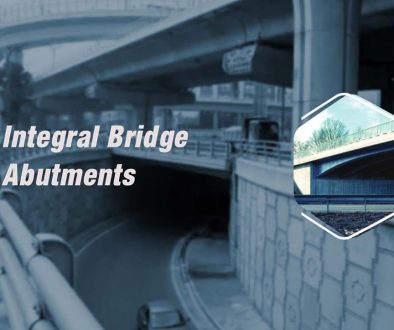Pile Driving
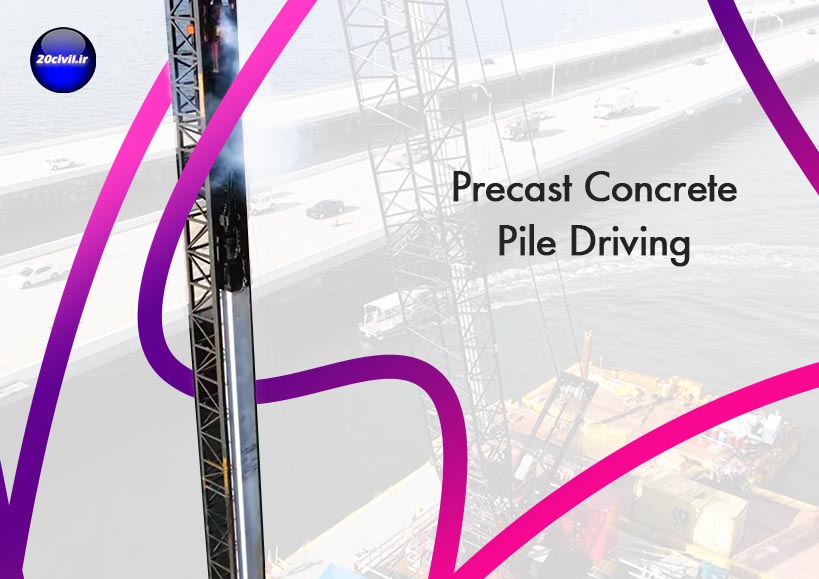
Driven piles are the most traditional type of deep foundation. They allow structures to be placed in areas that would otherwise be unsuitable due to subsurface conditions. today, the most common method of driving a pile is with a hammer.
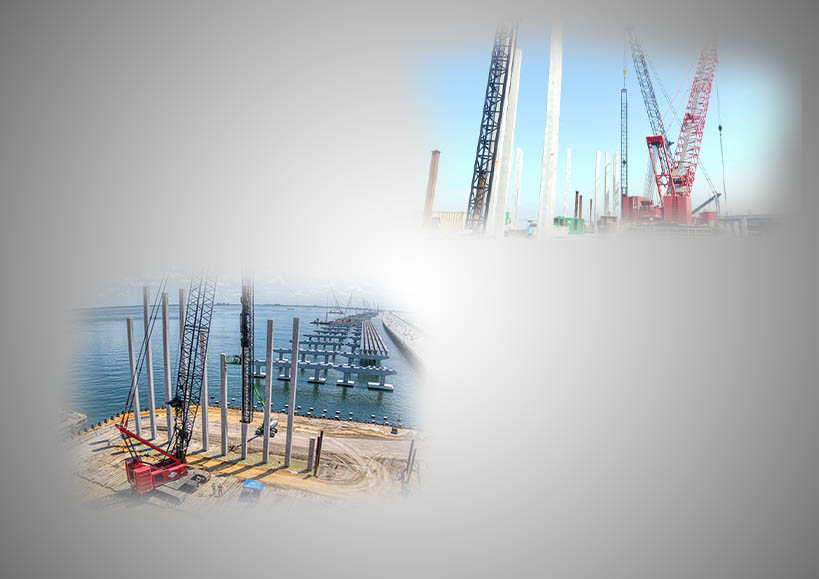
This essay is concerned summary of with precast pre-stress driven piles, so the other types of deep foundations will not be discussed here.
Concrete piles are considered non-corrosive but can be damaged by direct chemical attack (e.g., from organic soil, industrial wastes to organic fills), electrolytic action (chemical or stray direct currents), or oxidation. Concrete can be protected from chemical attack by use of special cements and by special coatings.
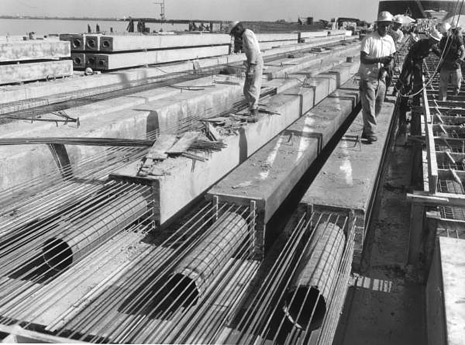
Requirements for precast concrete piles generally apply equally to prestressed units, except reinforcement. Such piles must be designed and installed in accordance with the general provisions for piling precast piles must be proportioned, reinforced, cast, cured, handled and driven to resist the stress induced by handling and driving as well as by structural loads.
Precast Reinforced Concrete Piles
These piles are manufactured from concrete and have reinforcement consisting of a steel rebar cage consisting of several longitudinal bars and lateral or tie steel in the form of individual hoops or a spiral. Reinforced concrete piles as compared to pre-stressed piles are more susceptible to damage during handling and driving because of tensile stresses.

Pre-stressed Concrete Piles
This pile consists of a configuration similar to a conventional reinforced concrete pile except the prestressing steel replaces the longitudinal reinforcing steel, The prestressing steel may be in the form of strands or wires and is placed in tension.
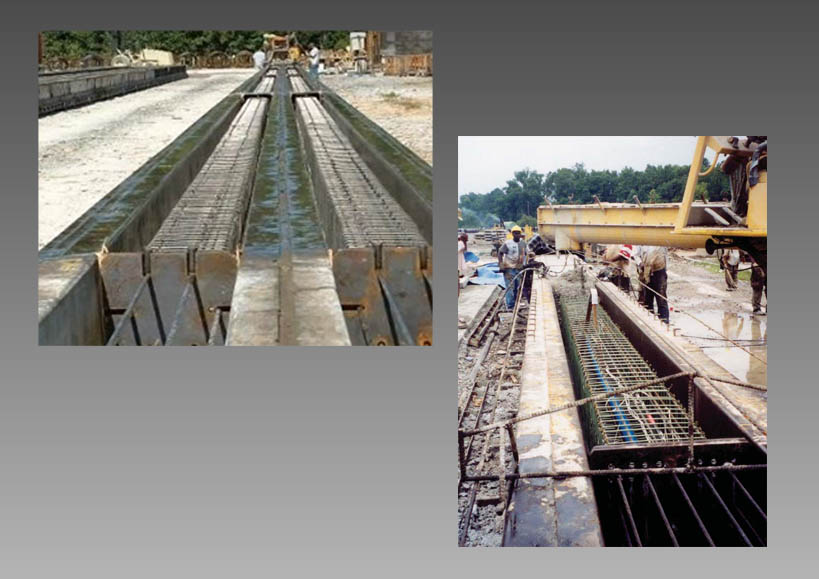
The prestressing steel is enclosed in a conventional steel spiral. Such piles can usually be made lighter and longer than normally reinforced concrete piles of the same rigidity. Prestressed piles can either be pre-tension or post-tensioned. Pretensioned piles are usually cast full length in permanent casting beds. Posttensioned piles are usually manufactured in sections and assembled and prestressed to the required pile lengths at the manufacturing plant or on the job site.
Prestressed concrete piles in bridge foundations are a feasible foundation alternative for extremely aggressive environments due to the chloride content of the water.
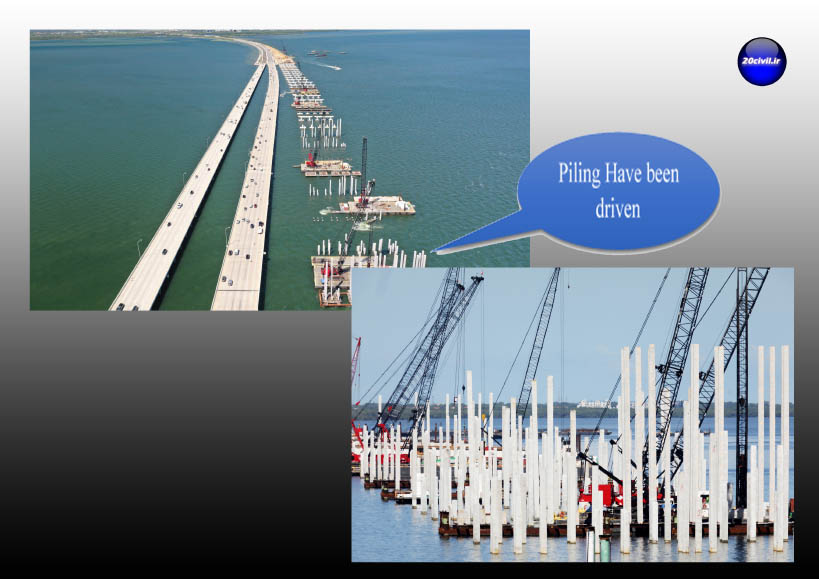
The minimum lateral dimensions of precast concrete piles should be 10” (254 mm). For piles designed with voids, the minimum wall thickness of concrete should be 4” (101.6 mm).Concrete preferably should have a higher strength than the usually specified minimum of 5 ksi (34.5 MPa) at 7 days if steam cured or at 28 days if cured by other means.
The minimum amount of longitudinal reinforcement should be at least 1.5 to 2% of the concrete section, made up of a minimum of four bars symmetrically placed.
The primary advantage of prestressed concrete piles versus conventional reinforced concrete piles is durability Since the concrete is under continuous compression, hairline cracks are kept tightly closed and thus pre-stressed piles are usually more durable than conventionally reinforced piles, Another advantage of pre-stressing (compression) is that the tensile stresses, which can develop in the concrete under certain driving conditions, are less critical, These piles are best suited for friction piles in sand, gravel, and clays.
Operation of pile driving
Successful pile driving is dependent upon both the condition of the equipment and the operating technique used. Failure to observe the proper equipment procedures can result in loss of energy imparted to the pile failure to reach the desired penetration depth, property damage, personal injury, and equipment breakdowns, all of which lead to downtime, project delays, and contract disputes.
The most common method of driving a pile is with a hammer, Hammer pile driving, has improved over time allowing for the development of larger and faster hammers. Rams raised by ropes through human or horse muscle, those hoisted by steam winches or powered by steam, air, or hydraulic pressure, and, finally, the diesel hammer.
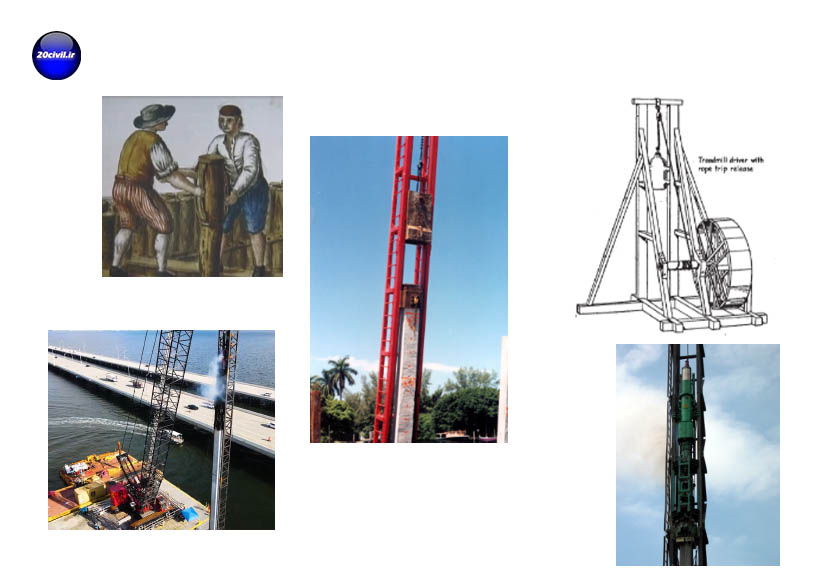
1.Hammer
The hammer is the element that directly interfaces with the pile Thus, it transmits and receives the most vibration and impact during driving. Although most pile drivers in use today are relatively simple machines, attention to their basic maintenance is still important. It is also essential that personnel with the proper training and experience should operate this equipment, in common with most construction equipment.
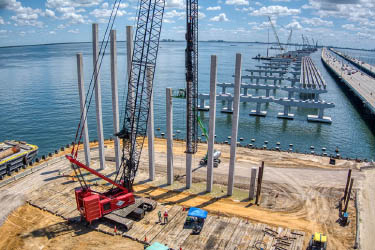
2. Overview of the Driving System
The Hammer pile driving system consists of the following components:
- The lead, also called the set of leads, sometimes including a brace that allows for the adjustment of the lead angle
- The hammer cushion, which protects both the hammer and the pile from excessive stress Hammer cushion materials are relatively soft compared to steel
- The helmet, which aligns the pile head and hammer. It is usually a steel casting
- The pile cushion. This is only needed on concrete piles, and usually consists of several layers of plywood
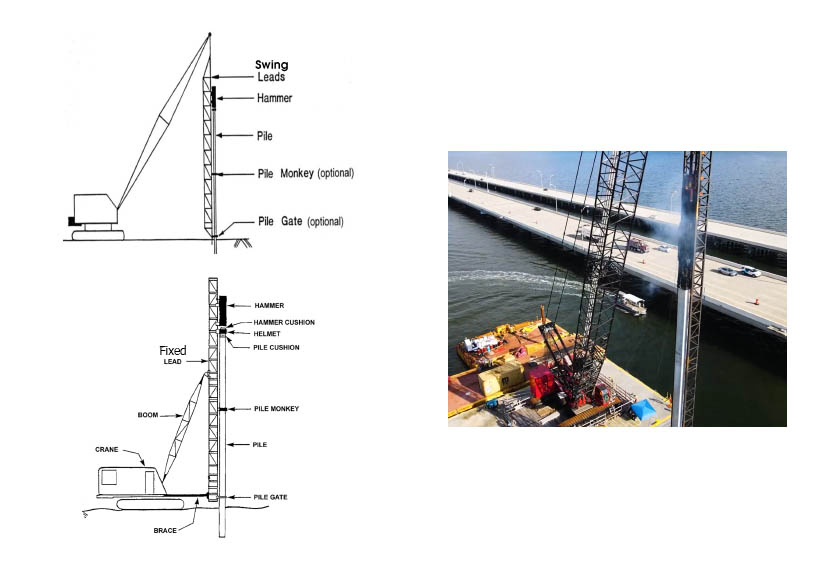
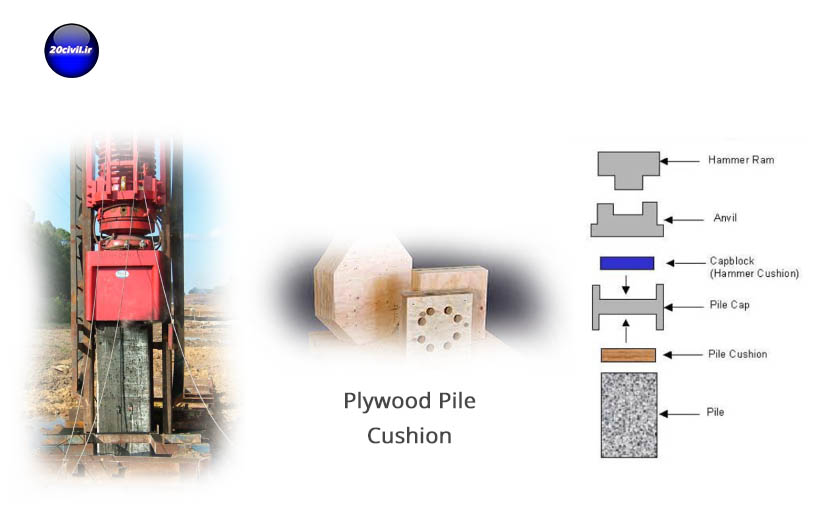
3.Pre-Excavation
Various pre-excavation methods are used in connection with pile driving to penetrate hard upper layers of soil, to prevent soil heave, to reduce driving resistance, to assist in removing or displacing obstructions, to relieve back pressure, to minimize the effect of driving on adjacent structures and to minimize stresses in piles and core, Pre-excavation will frequently present problems in disposal of water and spoil.
3.1.Preboring and Drills
Preboring consists of drilling, augering, or coring a hole in the ground and filling the hole with concrete or driving a pile into the hole. This is generally done with a continuous flight auger.
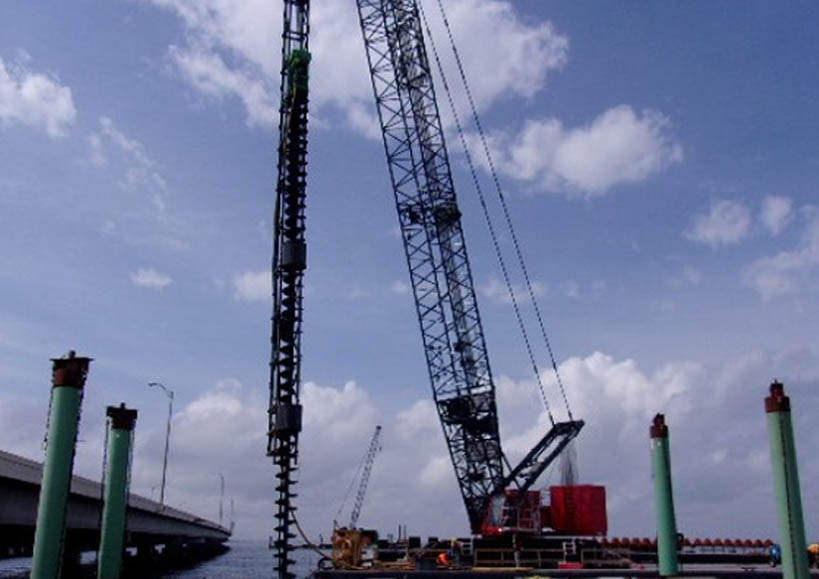
Sometimes, predrilling is necessary in order to drive a pile through obstructions such as timbers, boulders, and riprap, Predrilling is also frequently used for pile placement through embankments containing boulders, In such a case it is preferable to minimize predrilling by controlled embankment construction using soil particle sizes limited to 4” or less, The hole size depends upon the size and shape of the piling and soil conditions. It should be large enough to permit driving but small enough so that the pile will be firmly and solidly supported against lateral movement. Under most conditions, the predrilled hole diameter should be 4 inches less than the diagonal of square, and 1 inch less than the diameter of round piling, Where piling must penetrate into or through very hard material, it is usually necessary to use a diameter equal to the diagonal width or diameter of the piling, For driven piles, preboring is advantageous when the ground resistance is extremely high.
For square concrete piles, the diameter of the bored shaft should be approximately 125% of the nominal pile size, Although predrilling will generally reduce the driving resistance, it does so at the expense of shaft resistance, which decreases during the predrilling. This influence should be considered during design. Predrilling through cohesionless soils below the water table is not recommended, since the predrilled hole may not stay open and could require a casing.
For square concrete piles, the diameter of the bored shaft should be approximately 125% of the nominal pile size, Although predrilling will generally reduce the driving resistance, it does so at the expense of shaft resistance, which decreases during the predrilling. This influence should be considered during design.
Predrilling through cohesionless soils below the water table is not recommended, since the predrilled hole may not stay open and could require a casing.
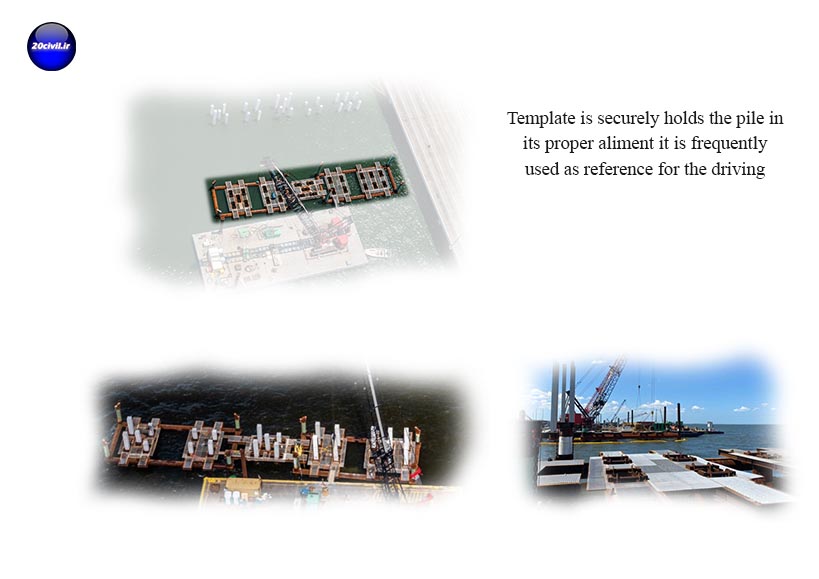
The most widely used method of predrilling is by utilizing an auger attached to the side of the crane leads. Over sizing the hole will result in a loss of skin friction and a reduction in the axial and lateral capacity, thereby necessitating re-evaluation of the pile foundation, When extensive predrilling is needed, consideration should be given to using a drilled-shaft system rather than a driven-pile system.
4. Concrete Pile Cutting
When the driving of a concrete pile is complete, the next step is to connect the head of the pile with the structure. It is frequently necessary to have the reinforcing bar protrude above the head of the pile to do this Two basic ways to accomplish this are:
- Manual Methods: Manual methods of concrete pile cutting involve the use of tools adapted for the task. In this case, concrete crushing is performed by jackhammers. Reinforcement bars are then cut by welding, or flame cutting. Concrete pile saws are also used manually.
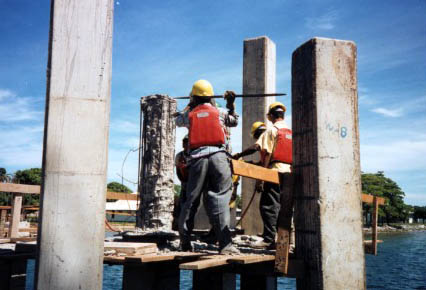
- Automatic Methods: These involve the use of hydraulic devices called concrete pile cutters, which crush the pile by effort applied in a transverse direction perpendicular to the pile axis. Because of this effort, the reinforcement bars were exposed and then cut by different ways at a predetermined level.
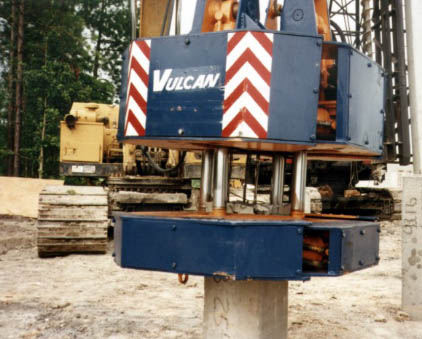
5.Pile points and splices
Cast steel point reinforcement and fabricated splicers are common accessories in a well-engineered pile foundation. Points for minimizing the possibility of damage to the pile generally caused by hard driving.
Pile splicers are routinely used to extend Prestressed Concrete Piles to increasingly longer lengths. Both can speed pile installation, aid in improving structural support, and help to reduce costly construction time. Figure 11 shows various types of pile splicers.
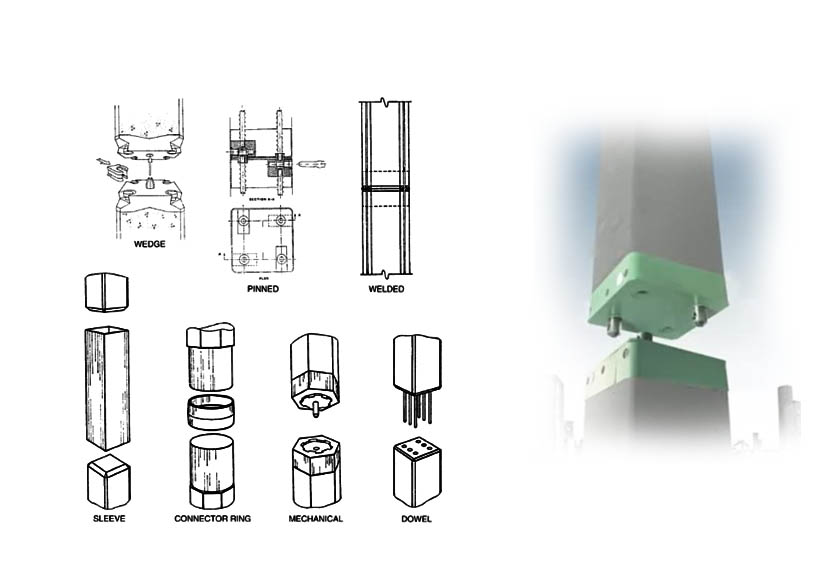
5.1.Points and Splice for Concrete Piles
Points and splices for concrete piles come in a wide variety of configurations. One thing that should be kept in mind is that precast and prestressed concrete piles are spliced and pointed in different ways; a method that would work with precast concrete piles may not be applicable to prestressed piles, and vice versa.
5.1.1.Points
The tips of concrete piles may be crushed in compression in hard driving. For hard driving conditions, or for end bearing on rock, special steel points can be attached to the tip. A common type of tip protection is a structural H section at the toe of the pile. Prestressed concrete piles can have the toe protected with an H-Pile Point as a means for penetrating difficult strata or extending the length of the pile.
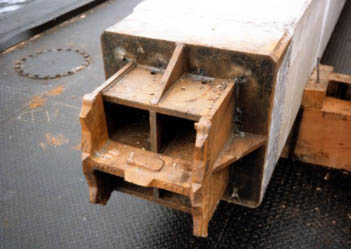
5.1.2.splices
Splicing is called for when pile lengths required are too long for trucking or driving in one piece with the available equipment. A pile may have one or more splices. The splice should be capable of resisting stresses induced by driving, and service loads and conditions. Tensile stresses are highest when resistance to driving is low and tensile waves are reflected back up the pile, Moment capacity is particularly important in high seismic zones, in piles possibly subject to impact, and in difficult driving conditions.
Splices can be generally categorized as follows:
Welded steel plates ,Dowel, Connector ring, Mechanical, Pinned ,…



